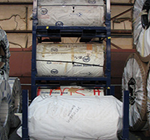Top Tips for Complying with OSHA Weight Lifting Standards
OSHA, also known as the Occupational Safety and Health Administration plays an important role in ensuring safety United States. One of the key areas of workplace safety includes manual lifting and handling of objects. Using lifting methods or dealing with weights can result in severe injuries that impact both individuals and business productivity. Adhering to OSHA weight lifting standards is crucial for fostering a productive work environment. Let’s understand the comprehensive tips on how to comply with these standards effectively.

What is OSHA Weight Lifting Standards?
OSHA does not provide specific weight limits for lifting but offers guidelines to prevent musculoskeletal disorders (MSDs). The guidelines focus on proper lifting techniques, ergonomic solutions, and safe work practices. Key points include:
- Evaluating the Lifting Task: Consider the weight of the object, the frequency of lifting, the height of lifting, and the distance the object needs to be moved.
- Training Employees: Ensure that workers are trained on safe lifting techniques and the use of lifting aids.
- Ergonomic Solutions: Implement ergonomic interventions to minimize the risk of injury.
Why OSHA Regulations for Lifting Weight is Important
OSHA regulations for lifting weight are vital for ensuring the safety and well-being of employees in various industries. These regulations are designed to prevent workplace injuries, particularly musculoskeletal disorders (MSDs), which are common in environments where manual lifting is frequent. Understanding the importance of these regulations is crucial for employers and employees alike. Here’s why adhering to OSHA weight lifting standards is essential:
1. Preventing Injuries and Ensuring Employee Safety: Manual lifting, especially of heavy loads, can lead to a range of injuries, from minor strains to severe musculoskeletal disorders. These injuries can affect the back, shoulders, arms, and legs. OSHA regulations for lifting weight emphasize proper lifting techniques and the use of mechanical aids to minimize the risk of such injuries. By following these guidelines, employers can significantly reduce the incidence of lifting-related injuries, ensuring a safer work environment for their employees.
2. Enhancing Productivity and Efficiency: A safe workplace is inherently more productive. When employees are free from the worry of potential injuries, they can focus more on their tasks, leading to increased productivity. Additionally, proper lifting techniques and the use of mechanical aids can streamline processes, making lifting tasks more efficient and less time-consuming. Adhering to OSHA weight lifting standards helps in maintaining a smooth workflow, reducing downtime caused by injuries, and improving overall operational efficiency.
3. Reducing Financial Burden: Workplace injuries can result in significant financial burdens for businesses. Costs associated with medical treatments, workers’ compensation claims, and lost workdays can add up quickly. By complying with OSHA regulations for lifting weight, employers can minimize the risk of injuries, thereby reducing these financial liabilities. Investing in employee training, ergonomic solutions, and mechanical aids is a proactive approach that can save businesses substantial amounts of money in the long run.
4. Legal Compliance and Avoiding Penalties: Non-compliance with OSHA regulations can lead to legal consequences, including hefty fines and penalties. OSHA conducts regular inspections and enforces regulations strictly. Businesses found violating these standards can face severe repercussions. Ensuring compliance with OSHA regulations for lifting weight not only helps in avoiding legal issues but also demonstrates a commitment to maintaining a safe and healthy workplace.
OSHA Lifting Weight Limit
Understanding OSHA lifting weight limits is crucial for ensuring workplace safety and compliance. Although OSHA does not prescribe a specific maximum weight limit for lifting, it provides guidelines and tools to help employers assess and mitigate the risks associated with manual lifting tasks. The focus is on creating a safe lifting environment through proper assessment, ergonomic practices, and employee training.
General Duty Clause and Lifting Safety
The Occupational Safety and Health Act of 1970 includes the General Duty Clause, which requires employers to provide a workplace free from recognized hazards likely to cause death or serious physical harm. This clause underpins OSHA’s approach to lifting safety, emphasizing the need for employers to identify and control lifting hazards.
NIOSH Lifting Equation
OSHA often refers to the National Institute for Occupational Safety and Health (NIOSH) Lifting Equation to help determine safe lifting practices. This equation calculates the Recommended Weight Limit (RWL) based on several factors that influence the safety of a lifting task:
- Weight of the Load: The actual weight of the object being lifted.
- Horizontal Location: The distance of the load from the worker’s body.
- Vertical Location: The height of the object relative to the worker’s body.
- Vertical Travel Distance: The range of motion required to lift the load.
- Asymmetry Angle: The degree of twisting or turning involved in the lift.
- Lifting Frequency: How often the lifting task is performed.
- Coupling: The quality of the grip on the object.
By taking these factors into account, the NIOSH Lifting Equation provides a recommended weight limit that minimizes the risk of injury under various conditions. Under ideal conditions, this limit is typically set at 51 pounds. However, this limit can decrease based on the specific circumstances of the lift.
Tips for Complying with OSHA Weight Lifting Standards
1. Conduct a Job Hazard Analysis (JHA)
A Job Hazard Analysis (JHA) identifies potential hazards associated with lifting tasks. It involves:
- Observing the Task: Watch employees perform lifting tasks to identify risky behaviors and conditions.
- Consulting Employees: Engage with workers to gather insights on lifting challenges they face.
- Documenting Findings: Record identified hazards and propose solutions to mitigate them.
2. Implement Proper Lifting Techniques
Training employees on proper lifting techniques is fundamental. Key aspects include:
- Stance: Stand close to the load with feet shoulder-width apart.
- Grip: Use a firm grip with both hands.
- Lifting: Lift with the legs, not the back. Keep the load close to the body.
- Turning: Avoid twisting the torso. Turn the whole body by moving the feet.
3. Use Mechanical Aids
Mechanical aids reduce the physical strain on workers. Consider:
- Hand Trucks and Dollies: Ideal for transporting heavy loads over short distances.
- Hoists and Cranes: Suitable for lifting very heavy objects.
- Conveyor Belts: Efficient for moving items along a production line.
4. Ergonomic Workplace Design
An ergonomic workplace design minimizes the risk of injury. Tips include:
- Adjustable Workstations: Allow employees to alter the height and position of their workstations.
- Proper Lighting: Ensure adequate lighting to prevent strain and accidents.
- Clear Pathways: Keep pathways clear of obstacles to prevent tripping hazards.
5. Employee Training and Education
Regular training sessions are essential. Topics to cover:
- Safe Lifting Techniques: Reinforce the importance of proper lifting methods.
- Use of Mechanical Aids: Train employees on the correct use of lifting aids.
- Recognizing Hazards: Educate workers on identifying and reporting potential hazards.
6. Encourage Team Lifting
For heavy or awkward loads, encourage team lifting. Tips for team lifting include:
- Communication: Ensure clear communication among team members.
- Coordination: Lift and move the load in a coordinated manner.
- Role Assignment: Assign roles to each member, such as who leads the lift and who follows.
7. Regular Health Assessments
Regular health assessments help monitor the physical well-being of employees. Consider:
- Pre-Employment Health Checks: Assess the physical fitness of new hires.
- Periodic Health Screenings: Conduct regular screenings to identify potential health issues early.
- Fitness Programs: Encourage participation in fitness programs to maintain physical health.
8. Establish a Reporting System
A reporting system for lifting-related incidents is crucial. It helps:
- Identify Trends: Spot patterns in lifting injuries to address recurring issues.
- Improve Practices: Use incident data to refine lifting techniques and safety practices.
- Promote Accountability: Ensure employees report all lifting-related injuries or near-misses.
9. Monitor and Review Lifting Practices
Continuous monitoring and review of lifting practices ensure compliance with OSHA standards. Steps include:
- Regular Audits: Conduct periodic audits of lifting practices and equipment.
- Employee Feedback: Gather feedback from employees to identify areas for improvement.
- Update Procedures: Regularly update lifting procedures based on the latest safety guidelines and employee input.
10. Foster a Safety Culture
Promoting a culture of safety is vital for compliance. Strategies include:
- Leadership Commitment: Ensure management is committed to workplace safety.
- Employee Involvement: Involve employees in safety planning and decision-making.
- Recognition Programs: Recognize and reward safe lifting practices among employees.
Conclusion
Adhering to the weight lifting standards set by OSHA is crucial, for ensuring a healthy workplace. By assessing job hazards practicing lifting methods utilizing tools, like hoists creating ergonomic workspaces offering continuous training promoting teamwork in lifting tasks conducting regular health check-ups setting up an effective reporting system, consistently monitoring and evaluating procedures and nurturing a culture of safety companies can greatly minimize the chances of injuries related to lifting.
About The Author










